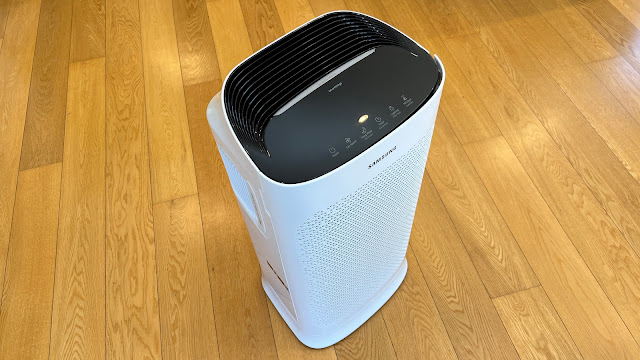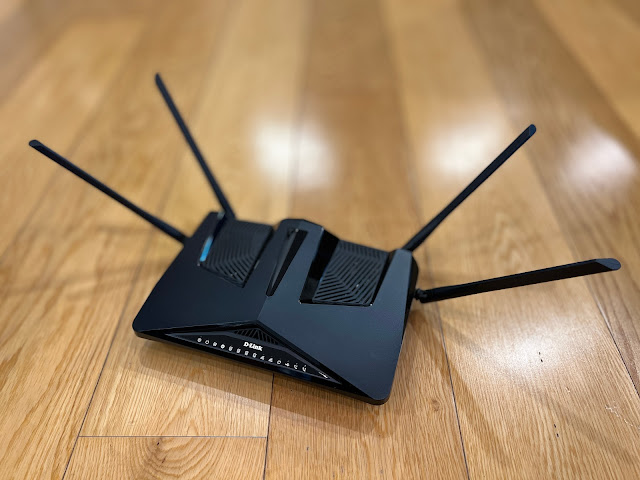For some reason Jabra seems to fly under the radar a little when it comes to earbud options in New Zealand.
Perhaps this is just my personal perception but although Jabra was always a go-to when those single bluetooth earpieces real estate agents seemed to wear all the time were in fashion, and many reception and call-centre staff will be familiar with the name appearing on their softphone headsets, it seems like Jabra is yet to achieve quite the same brand cut-through with its true-wireless earbuds.
This weird because I am constantly and consistently impressed by every pair of Jabras I try, often promoting them to my daily use, even after I've finished reviewing them.
This is primarily due to a pleasing form-factor and an excellent fit.
As I've often talked about before, for me, there are three primary concerns when selecting true-wireless earbuds; how do they sound? How do they look? And most importantly, how do they fit?
Let's pop the latest Jabras in and find out if they measure up.
When my Jabra Elite 5 earbuds arrived for review, I was stoked to discover I'd been sent the Gold Beige option, rather than the Titanium Black. All too often we tech geeks get stuck with basic black or boring white so it was a refreshing surprise to take this warm, neutral case out of the box, flip the lid and see the Jabra logo embossed over the distinctive triangular, gold control buttons on each bud.
This is another feature I find extremely appealing with Jabra earbuds; physical buttons rather than the capacitive touch controls found on so many other brands. As technologically clever as those touch controls might be, all too often I find myself accidentally skipping my podcast when it's only halfway through or hanging up on my mother mid-call - never a good idea. Because the fully customisable Elite 5 buttons basically make up the whole side of each bud, they're easy to find and you can't really press them by mistake.
You can tailor your controls and preferences using Jabra's Sound+ app, although this isn't required for initial setup; pairing is very easy - either via Google Fast Pair, Microsoft Swift Pair or just hold down both buttons simultaneously and follow the voice prompts. There's a good selection of the latest bluetooth codecs to ensure a super clear and strong connection and I certainly haven't experienced any dropouts or interference.
Like most ANC-capable earbuds these days, you can toggle noise cancelling on or off or introduce a pass-through feed if you need to hear the outside world for some reason. Jabra uses a mix of both external and internal mics to cancel unwanted sound - they call this Hybrid Active Noice Cancellation and it's certainly quite effective.
This pairs well with the passive cancellation Jabra achieves with the Elite 5's excellent, excellent, excellent fit. (Yes, that's three "excellents") The snaking shape and small size of the tips allow these buds to nestle quite a long way into your ear canal and I've found once they're in, they simply don't budge. Not even a little bit. Not even in the rain or when sweating - lucky they carry an IP55 dust and water resistance rating.
But how about the 6mm drivers? What has Jabra managed to pack into these relatively small and light packages sound-wise?
The dynamic contrast of Pink Floyd's "Poles Apart" is a lovely piece of audio production to begin with; acoustic guitar behind Dave Gilmour's slide lead licks, followed up with the mysterious and slightly creepy carnival organ and church bells in the middle of the track, panning all around my head. The Elite 5's impress with their accurate reproduction across all frequencies.
My personal preference is to wind the bass up a bit - which I'm easily able to do via the Sound+ app. There are several preset EQ's but you can also noodle around with the 5-band equaliser yourself, creating and saving custom presets of your own.
Having my bass boosted really paid off when "Raleigh Twenty" by Fat Freddy's Drop came up in my mix. The moog bass and retro synth drops just sound so clean and punchy.
Ultimately my general impression of the Elite 5 mix is it's so precise, it lacks a little bit of warmth. On the upside, there's little or no muddying and I certainly never encountered any distortion - even at high volumes.
There's another odd feature in the Sound+ app; Soundscape. This converts the Elite 5's into noise-blockers only; offering you a selection of sound-masking background ambiences - ranging from rainstorms to ventilation fans. This is effectively a third method of noise cancellation; you have the passive effect of the snug seal, the active NC we've already talked about and now you can flood your ears with songbirds or a babbling brook when you really need to block out the rest of the world (or at least the rest of your office).
Just a warning; this next bit is going to get a little gross. So brace yourself.
One downside of the Elite 5's being able to fit so effectively into your ear canal is wax. There's no easy way to say it; the trade-off for this incredible fit is I have to keep an earbud and a tissue handy when I take them out because there's usually a little bit of gooey goodness embedded somewhere in the tips. Sorry - but I did warn you. This phenomenon is not unique to the Jabra Elite 5 design of course; most earbuds require a pretty regular clean to maintain both hygiene and audio clarity. It's just that these ones in particular, especially in this lighter colour, seem a little more prone to picking up gunge. Hey, let's not rule out the possibility I may have particularly gungey ears.
Don't let any of that put you off - I'm definitely happy to carry out a bit of waxy maintenance now and again in exchange for such a rock solid fit.
Battery life is decent - not world beating, but decent - up to seven hours from the fully charged buds and up to twenty-eight hours in the case. Oh, that's with ANC on. I've just discovered Jabra claims up to 36 hours use with the case if you keep noise cancelling off. Sheez. That's actually rather impressive. You can also fast charge via the USB-C connection although my preference is to pop the case down on a wireless charger when I'm not using it. Once you go wireless, you'll never look back.
Priced at NZ$239.00, the Elite 5 buds are certainly not cheap, but given their very full suite of high-end features, they're considerably less expensive than many other options with similar specs. I consider them excellent value and to be honest, can't really see a reason to take them out.
Click here for more information and pricing on the Jabra Elite 5.










































